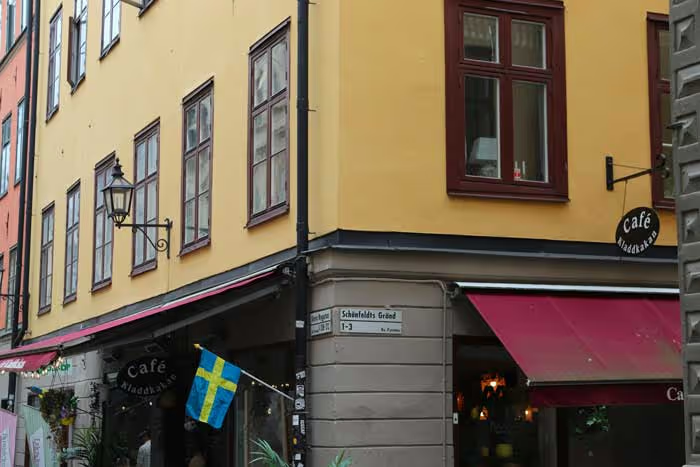What is E-Commerce?
E-commerce, or electronic commerce, involves the remote sale of goods and services. A customer completes a transaction via digital devices on an online sales platform. The development of the e-commerce sector has led to nearly unrestricted access to goods and services worldwide, making cross-border sales possible without physical storefronts.
However, selling online does not exempt the seller from tax obligations. Even without a local presence in Sweden, earning revenue from Swedish or EU customers creates a tax liability.
What Determines Tax Obligations in E-Commerce?
If you run a business and sell goods or services online, each transaction must be reported separately. This allows the tax authority to verify how much you’ve earned and which VAT rate applies. In Sweden, VAT is generally 25%, but depending on the product or service, it may be:
- 25% (standard rate)
- 12%
- 6%
- 0% (exempt)
What Should an E-Commerce VAT Invoice Include?
The VAT invoice is essential for both the seller and the buyer, as it:
- provides the basis for VAT reporting
- supports the buyer’s right to deduct input VAT
- allows tax authorities to verify VAT compliance
The invoice must contain the following elements:
- date of issue
- unique invoice number (from one or more series)
- seller’s VAT number
- buyer’s VAT number (if reverse charge applies)
- names and addresses of both parties
- quantity and description of goods/services
- date of supply or payment (if different from invoice date)
- taxable amount for each VAT rate, unit price excluding VAT, and any discounts
- VAT rate and amount of VAT due
- note on margin scheme if applicable (no VAT shown)
Missing any of these can impact the buyer’s right to deduct VAT. In some cases, the invoice can be corrected; in others, a new one must be issued.
Own Warehouse vs Dropshipping – Different Tax Rules in Sweden
E-commerce sellers may hold their own inventory or use a dropshipping model, where a third-party supplier ships directly to the customer. These models have different tax implications.
VAT and Own Inventory in Sweden
Selling via own platform to EU customers
If you operate your own online shop and your annual turnover is below 99,680 SEK, and you sell to private individuals in the EU, you must apply Swedish VAT.
If you exceed this threshold, you must apply the VAT rules of the customer’s country. This means registering for VAT in those countries or using the One Stop Shop (OSS) system. You can also choose to join OSS voluntarily, even below the threshold.
Selling via external EU platform
If you use a third-party e-commerce platform but sell in your own name, the same turnover limits and rules apply. This still qualifies as business-to-consumer sales, but you remain responsible for VAT.
Selling via own platform to non-EU customers
If you sell to customers outside the EU, this is considered an export and is VAT-exempt. However, you may need to register for tax purposes in the buyer’s country. Even if you don’t report the transaction in a Swedish VAT return, you must include it in your accounting records.
Selling via external non-EU platform
Same rules apply as above. If the platform is outside the EU, the sale is treated as an export; if it’s within the EU, intra-EU rules apply.
VAT and Dropshipping in Sweden
In dropshipping, a third party handles inventory and delivery, but you as the seller still bear tax responsibility depending on where the customer and supplier are located.
Customer and supplier in the EU
In most cases, you’re responsible for reporting VAT to the customer. You can use OSS to simplify VAT declarations in customer countries. For example, if both you and your supplier are in one EU country and your customer is in another, you must report cross-border VAT.
Customer and supplier outside the EU
If both the customer and the supplier are outside the EU, the transaction is treated as an export. You don’t charge Swedish VAT, but you may need to register for tax in the customer’s country and report it in your accounting.
Customer in the EU, supplier outside the EU
This setup is common in global e-commerce. The customer pays VAT at the time of purchase. If the order value exceeds €150, it is no longer treated as a low-value import. The seller must inform the platform that the product is shipped from outside the EU. In that case, the platform becomes the deemed supplier and is responsible for VAT.
If the platform is EU-based, the transaction is reported as intra-EU sales in a VAT summary. If it’s non-EU, the sale is classified as an export.
Customer outside the EU, supplier in the EU
Here, the sale is treated as an export. No Swedish VAT applies, but the seller may need to register for VAT in the buyer’s country. This follows the same logic as sales where both the seller and customer are based outside the EU.
Conclusion
Sweden’s VAT rules for e-commerce vary based on:
- your sales model (own inventory or dropshipping)
- platform used (own site or marketplace)
- location of your customer and supplier
- transaction value and nature of goods
As an e-commerce entrepreneur, you must understand how VAT applies to your business model, how to issue compliant invoices, and how to report sales correctly. Choosing the right tax structure and logistics setup is critical to avoid penalties and optimize operations.
Planning to launch or scale your online business in Sweden? Contact Revea – we help e-commerce businesses with VAT registration, tax compliance, and strategic advice tailored to cross-border sales.










